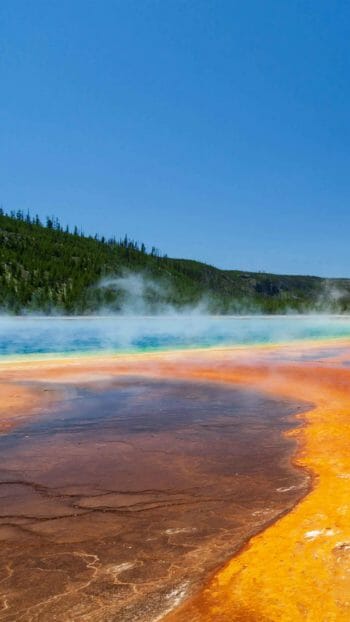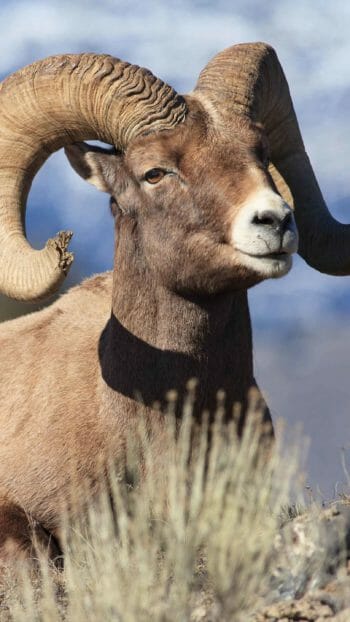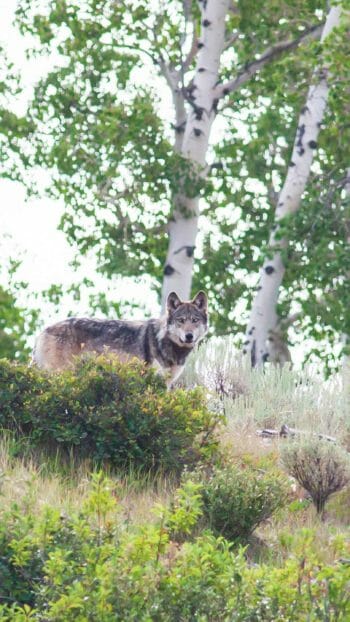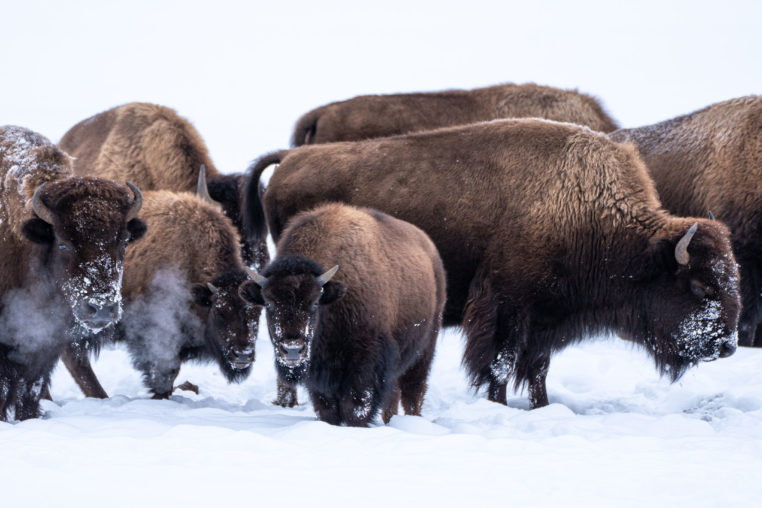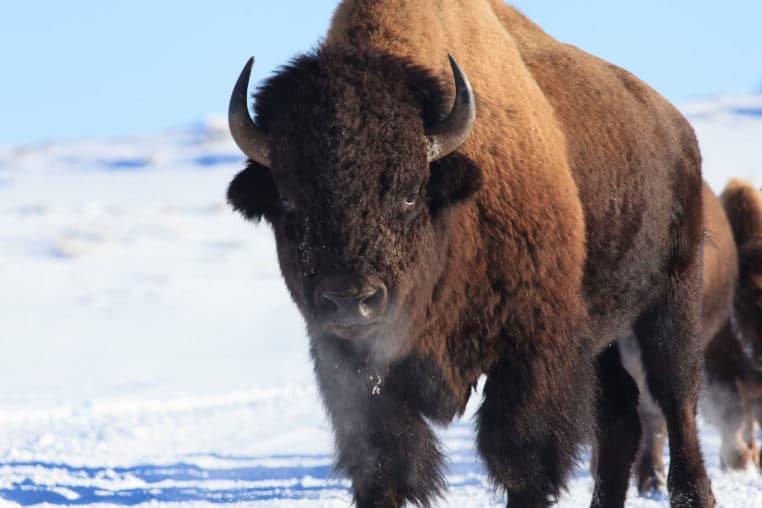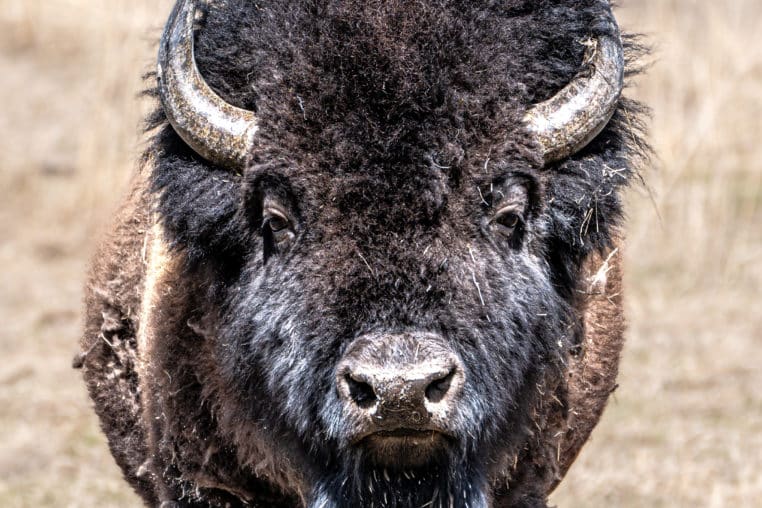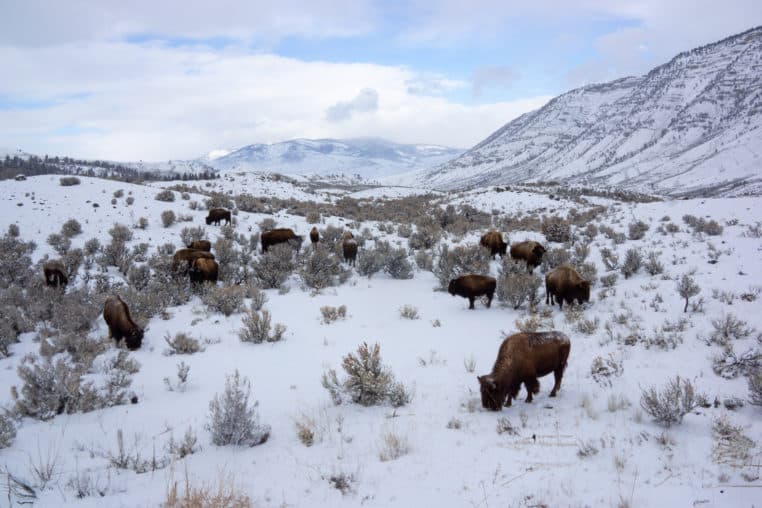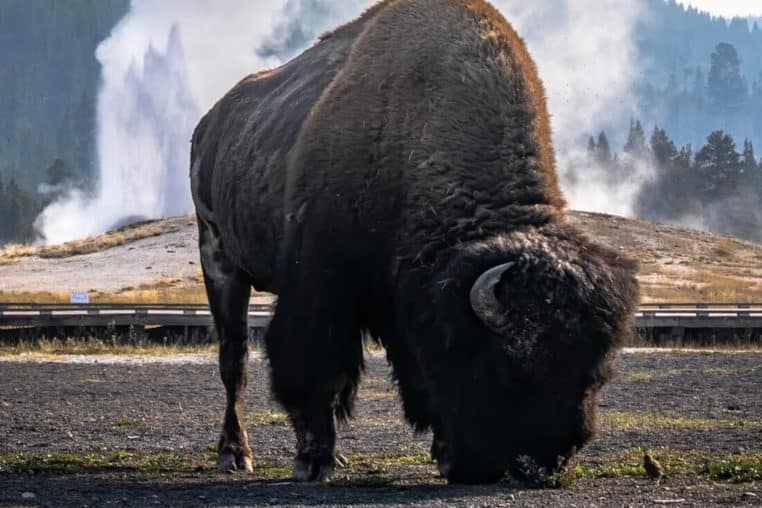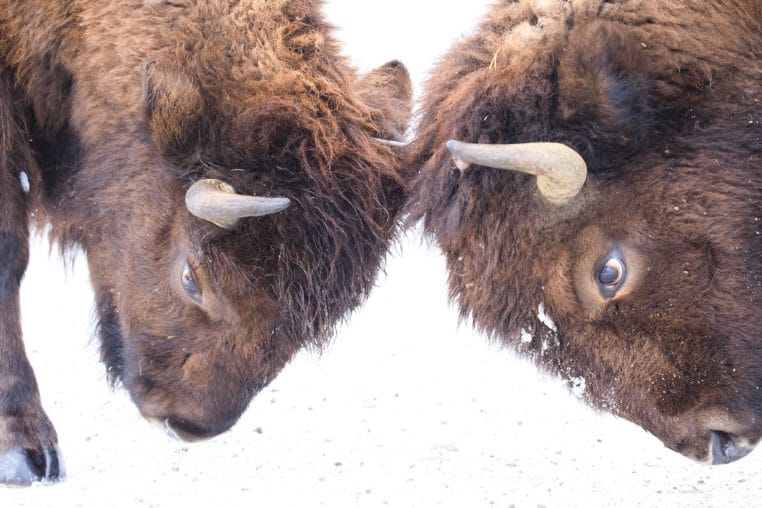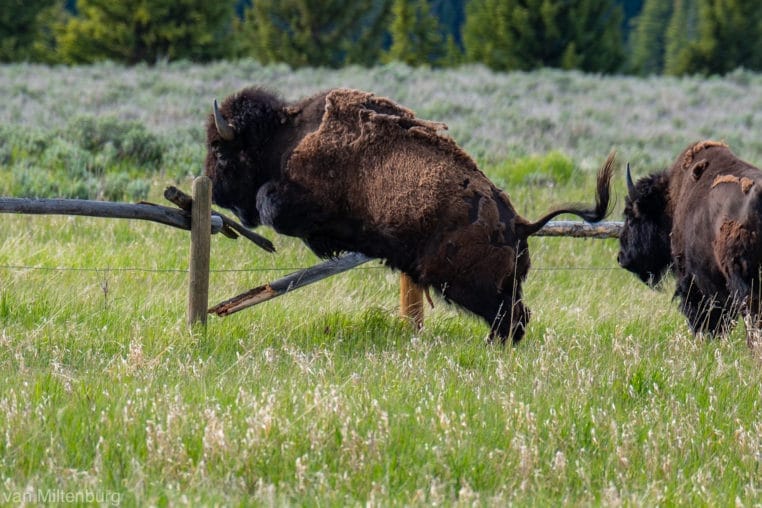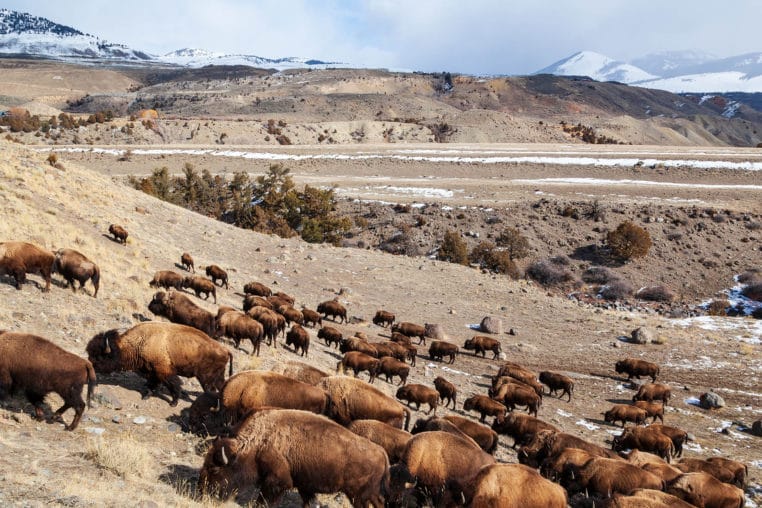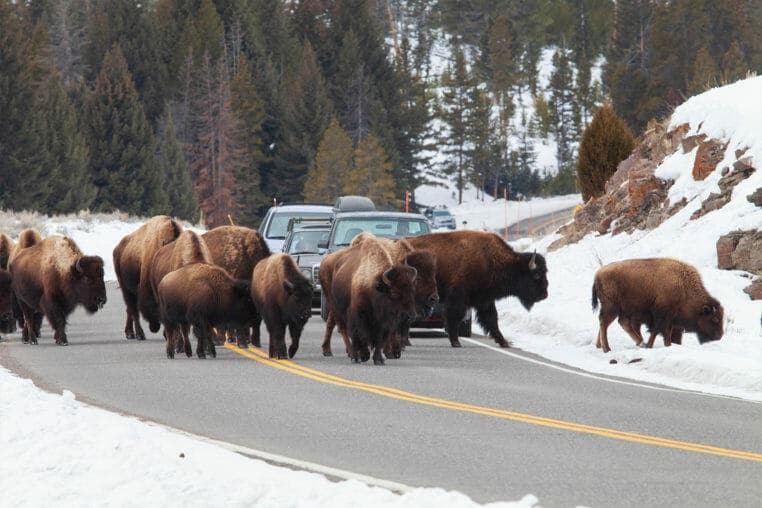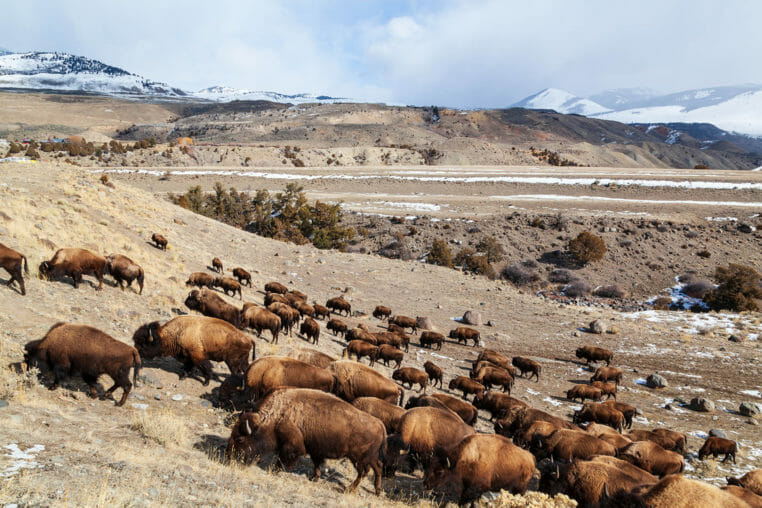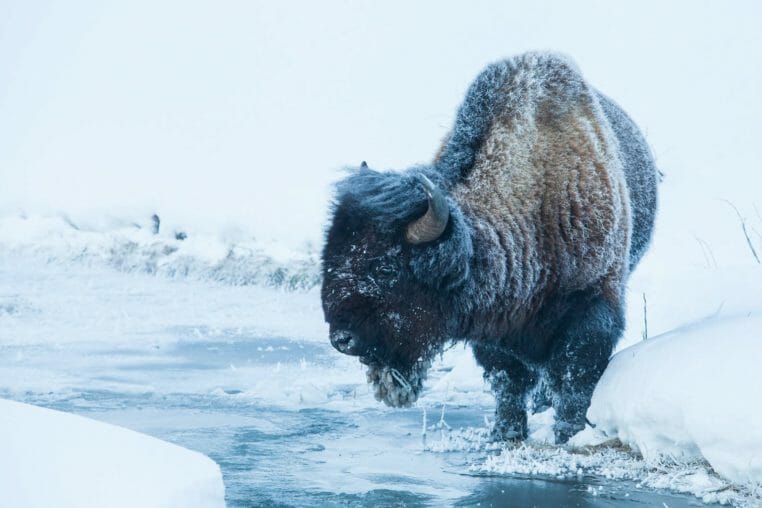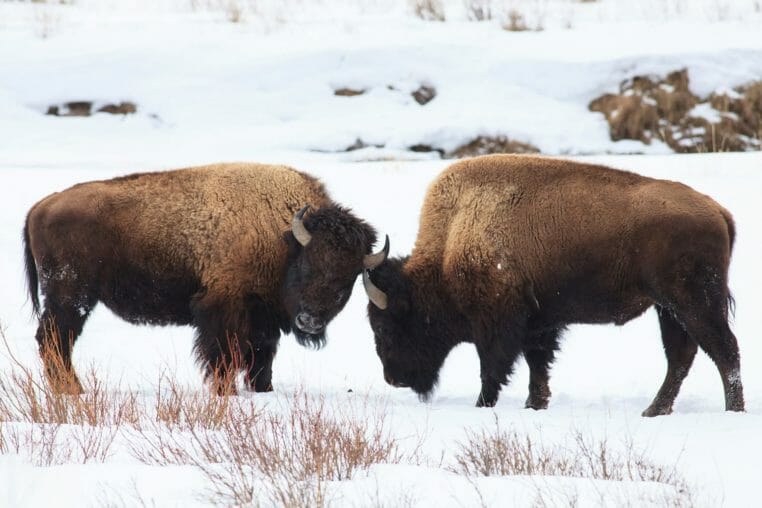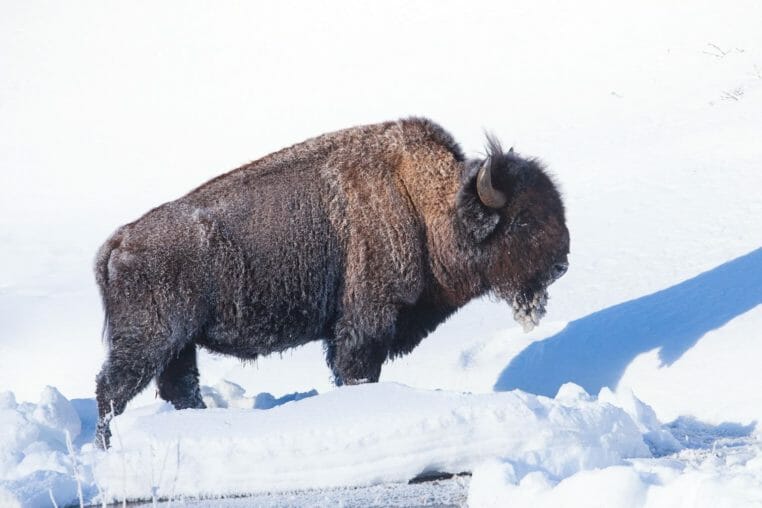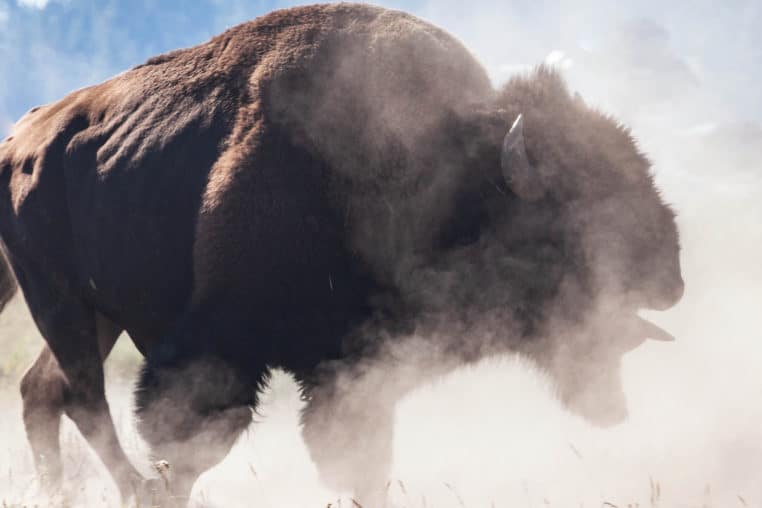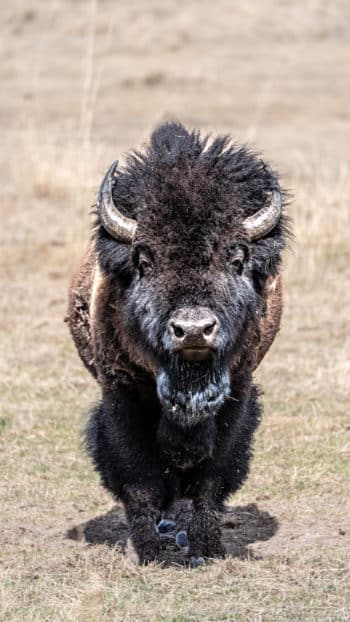
Bison bison
The American bison, our national mammal, is one of the most awe-inspiring species of North America and a true icon of Yellowstone and Grand Teton National Parks. These massive grazers are the largest land mammals on the continent. Female bison, known as cows, weigh around 1,000 pounds, while males, or bulls, can tip the scales at more than 2,000 pounds. Despite their enormous size, bison are surprisingly fast and agile—they can sprint up to 35 miles per hour and leap six feet into the air. Because of their strength and unpredictability, it’s essential to give them plenty of space, as they will charge if threatened.
Wildlife Viewing
- Yellowstone
Book Online
Watch For Wildlife On These Tours
About
A Fragile History
Once, over 30 million bison roamed the Great Plains and western United States. By the late 1800s, relentless hunting for hides and a government-led effort to displace Native American tribes reduced their population to fewer than 300 animals nationwide, just 23 of them in Yellowstone. Thanks to conservation efforts, Yellowstone remains one of the only places where bison have lived continuously since prehistoric times, and is now home to the largest free-roaming bison population in the world.
The Rut
Bison have a long mating season that begins in July and peaks in August. Unlike elk, where one bull guards a harem of females, bison herds intermingle during the rut. Bulls closely follow cows that are nearing estrus, defending them aggressively against other males. When challenged, bulls may engage in intense, sometimes dangerous battles. The rut is also punctuated by deep bellows—low, rumbling calls that echo across the landscape.
Calves and Gestation
Bison share the same nine-month gestation period as domestic cattle. Calves, affectionately nicknamed “red dogs” for their rusty-orange coats, are born in spring. Mothers may give birth within the herd or seek out a quiet place for calving. By summer, nurseries of calves are often seen playing and running together while their mothers graze nearby.
Best Times to See Bison
Bison are among the most iconic wildlife in Yellowstone and Grand Teton National Parks, and unlike many other animals, they are highly visible throughout the year. In summer, vast herds graze the open valleys, particularly in Yellowstone’s Lamar Valley and Hayden Valley, where visitors can often see hundreds of bison at once. During the August rut, bulls bellow, wallow in the dust, and spar in dramatic clashes that echo across the landscape- an unforgettable wildlife spectacle.
Winter offers a completely different experience, as bison endure the harshest conditions with remarkable resilience. They use their massive heads to sweep snow aside in search of grasses, creating some of the most iconic images of Yellowstone’s winter wildlife. Because bison are diurnal, meaning they are active throughout the day, travelers have excellent opportunities for sightings year-round. Whether in the heat of summer or the deep snows of winter, bison viewing in Yellowstone and Grand Teton is always a highlight of any visit.
FAQs
How many bison live in Yellowstone National Park?
Yellowstone is home to the largest wild bison population in the world, with estimates ranging between 4,500 and 6,000 animals. These herds roam freely across the park, making bison one of the most reliable wildlife sightings in Yellowstone.
What is the best time of year to see bison in Yellowstone and Grand Teton?
Bison can be seen year-round, but the best times for viewing are summer and winter. In summer, large herds gather in Hayden Valley and Lamar Valley, while the August rut showcases dramatic behaviors such as wallowing, bellowing, and head-to-head clashes. Winter offers a different experience, with bison pushing snow aside to graze, an iconic Yellowstone sight.
Why are bison sometimes called buffalo?
Although the terms are often used interchangeably, bison and buffalo are not the same animal. The true buffalo live in Africa and Asia, while the American bison is native to North America. Early European settlers mistakenly called bison “buffalo,” and the nickname has remained ever since.
How close can visitors safely get to bison?
The National Park Service recommends staying at least 25 yards (23 meters) away from bison at all times. Despite their calm appearance, bison are unpredictable and can run up to 35 miles per hour. Approaching too closely is dangerous and one of the most common causes of wildlife-related injuries in Yellowstone. During the August rut, it would be a good idea to keep an even larger distance!
What is the bison rut and when does it happen?
The bison rut, or mating season, takes place in July and August. During this time, bulls compete for females by following cows, wallowing in dust, bellowing, and occasionally engaging in powerful head-to-head battles. It is one of the most spectacular wildlife events in Yellowstone and Grand Teton National Parks.
Further Reading
Lamar Valley Yellowstone: A Wildlife Watcher’s Paradise
Aug 12, 2025
Tucked into the northeastern corner of Yellowstone National Park lies one of the most wildlife-rich landscapes in North America—Lamar Valley. Often called “America’s Serengeti”, this expansive valley is celebrated for its sweeping views, abundant animal sightings, and exceptional opportunities for nature photography
Wildlife Tours in Yellowstone: Your Complete Guide to the Best Safari Experiences
Jul 23, 2025
Yellowstone National Park is one of the world’s most celebrated wildlife destinations, where vast landscapes and thriving ecosystems come together to support a dazzling array of North American species. From the thunder of bison hooves across the Lamar Valley to the haunting call of wolves at dawn, this park offers a rare opportunity to witness wildlife in its natural habitat.

